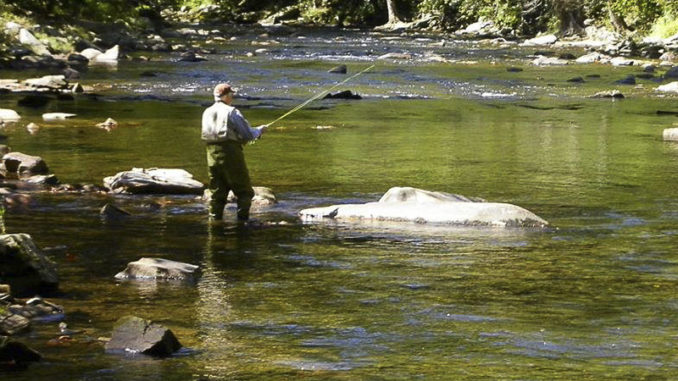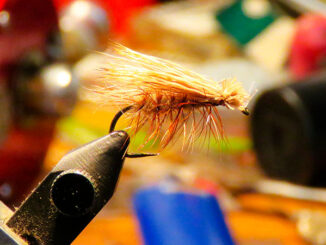
Trout fishing has been the columnist’s joy, but now it’s behind him
The day after Thanksgiving, my son and I fished the hatchery supported waters of North Carolina’s Tuckasegee River, starting in the lower section above the delayed-harvest waters.
I had one strike and missed, and when neither one of us had another strike, we moved upstream about 2 miles to East Laport. Once the site of an 18th century French Trading Post, East Laport is now a Jackson County park.
Caney Fork enters the river above the park; below the park, the river is split by a small, wooded island. The lower split forms a wide curve of water about 75 feet across, a combination of slow water bordering the island and swift water on the opposite bank. The bank is heavily vegetated and not easily accessible, ignored by most fishers because finding an open place to cast is difficult. It is a place I go when I don’t catch a fish in more accessible areas. Rarely does it fail to produce a nice trout or two.
My son found an accessible spot, and I went downstream until I found a small, open space surrounded by thick, bankside growth. I waded through vines and brush, and when I stepped out of the brush to the open area, my legs became tangled in vines. I stumbled and fell face down in the water.
The cold water took my breath, but I wasn’t hurt. My glasses were knocked off when I fell, and I was hesitant to get up, My feet were tangled in vines, and I was afraid that if I tried to free my legs, I would step on my glasses in the 3 feet or so of water, so I waited, sitting in the water, for my son to come within hailing distance.
Time to quit
As I sat in water up to my chest, a realization that I had been ignoring for more than a year hit me full force. Every time I had been fishing lately, I had fallen, never hurting myself seriously, just scratches and bruises, but the falls were bothersome. I no longer can navigate swift water and rocky streambeds, even with a wading stick. And I can no longer crawl through endless laurel growth, climb steep, rocky banks looking for the special patch of water that always held trout.
I had to finally accept that my trout-fishing days are over.
Favorite meals
I’ve fished for more than 60 years, starting when I was 13, catching bluegill in Paddys Creek in western Burke County. I always ate my catch, and fish, freshwater or saltwater, has always been my favorite food.
When I want trout to eat, I fish hatchery waters, usually using live bait or spinners, whichever is convenient at the time. When I fish wild-trout waters, I fly fish, and will occasionally keep one or two for dinner, but never more than I need. Trout are best when they are consumed fresh from the water. I do not eat trout in restaurants or buy frozen trout, an abomination.
I am a member of Trout Unlimited because I want to help support its stream restoration projects. But I do not follow TU’s insistence on catch-and-release, mainly because most fisheries biologists don’t agree with strict catch-and-release policies. Trout have a short lifespan, particularly in small, mountain streams where adequate food isn’t abundant. Thinning them helps reduce the competition for food. What I don’t condone is keeping more trout than you need, regardless of the legal limit.
One exception is that I do not keep native brook trout, in any case. Brown and rainbow trout are interlopers, no matter how long they’ve been here. Brook trout, from all evidence I’ve read, were here even before the Cherokee. Their habitat is limited due to competition with the more aggressive browns and rainbow. They deserve a break.
As for whether stocked trout and wild trout taste differently, there is a difference, one I can only describe as comparing the difference in how a sun-ripened tomato tastes compared to a grocery store tomato or how new potatoes straight from the garden taste compared to old potatoes.
Time to stop writing
I started writing about the outdoors when I worked for the Asheville Citizen-Times and did so for about 10 years until the paper was sold to Gannett and writing a weekly column became work instead of pleasure.
Shortly thereafter, I started writing for North Carolina Sportsman magazine in its infant stages when it was a tabloid type of publication, and I’ve stayed with it through its transformation into Carolina Sportsman, becoming a first-class outdoors magazine. I never missed a column.
In more than 60 years of trout fishing, I have had the pleasure of fishing all the primary trout streams in western North Carolina and hundreds of secondary streams.
The trout my son caught that day was my last trout dinner, and after 30 years of writing about trout fishing, this is my final column.





Thank you for the pleasure of your writing Bob. What a gift!